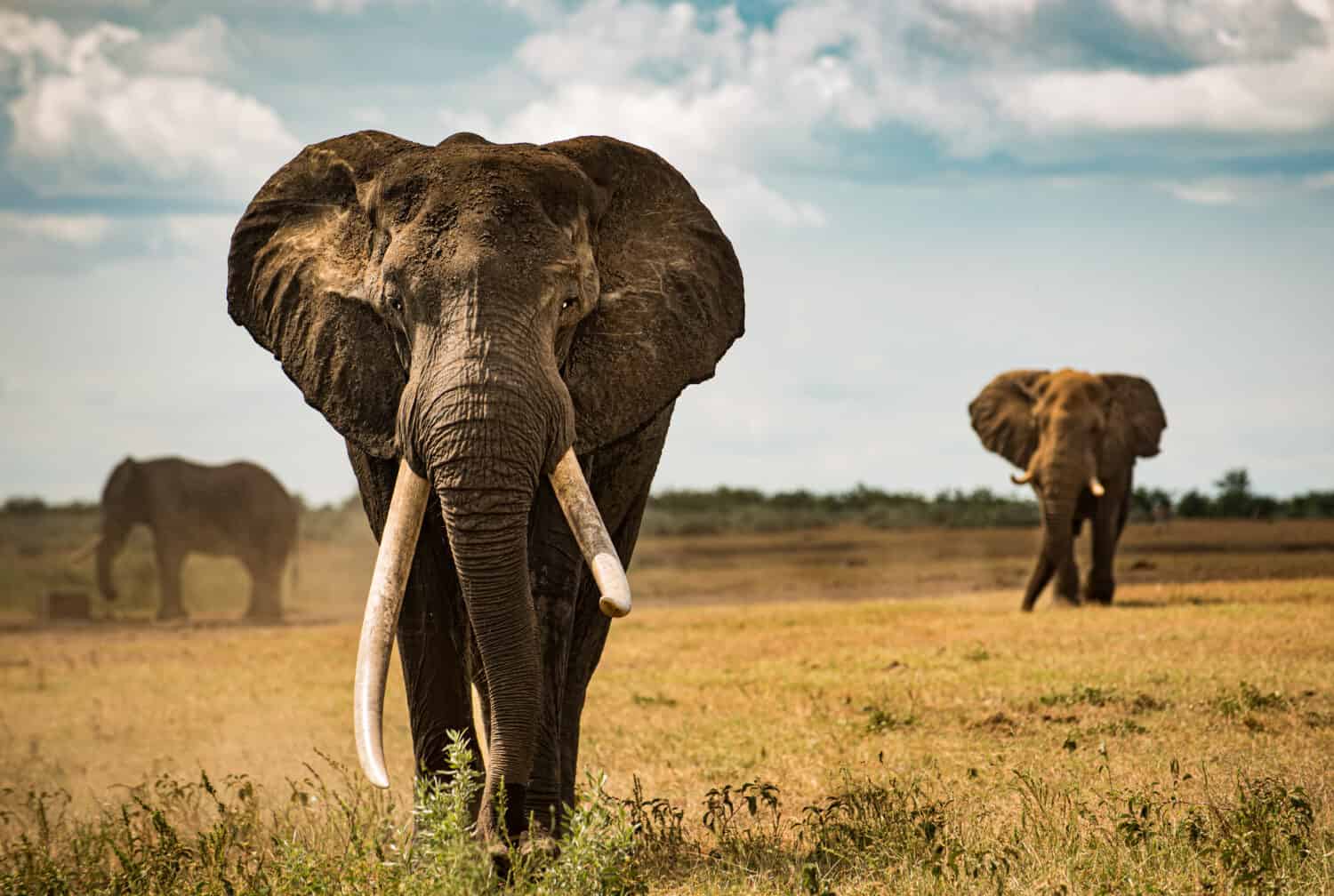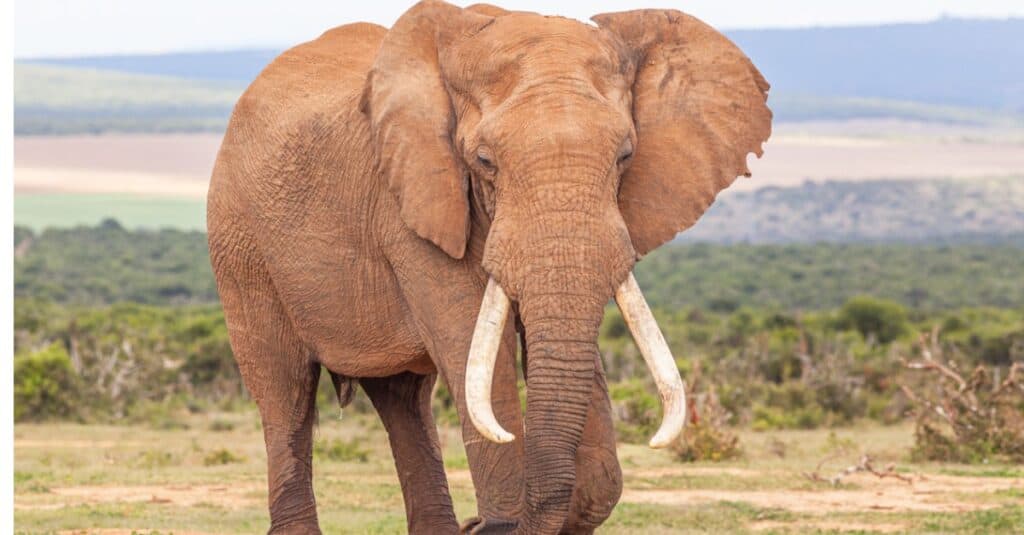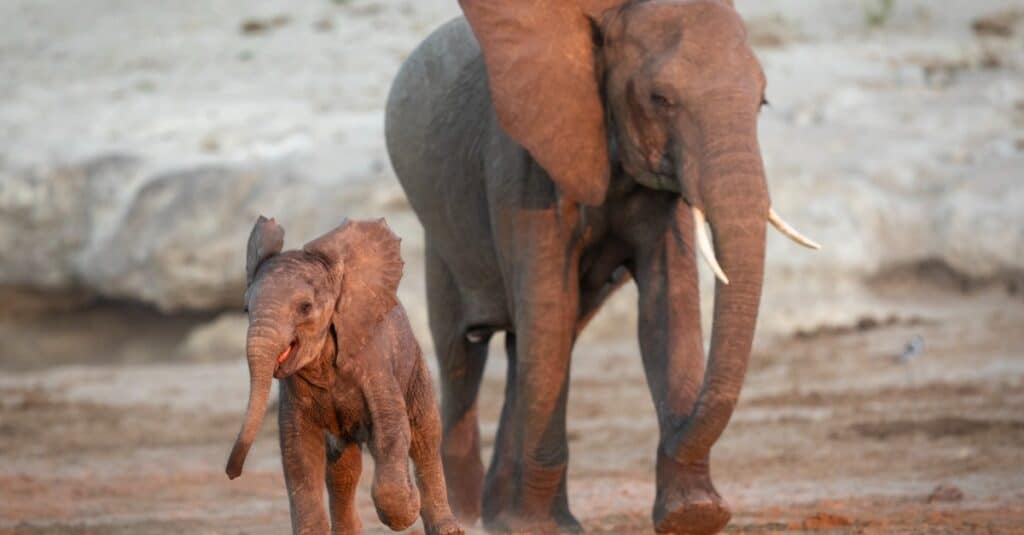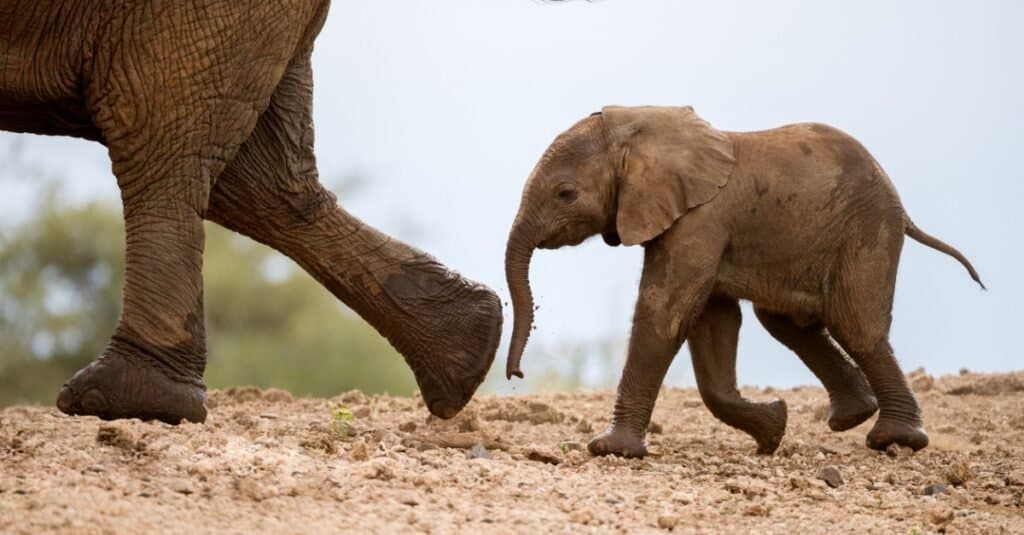Continue reading for our analysis...

Watch this heartwarming video of a baby elephant falling into a water trough with lions surrounding the vulnerable baby. The monarch of the herd alerted to the danger, comes to rescue the poor animal. This extraordinary encounter shows the boundless compassion and intelligence of these amazing creatures as they unite to shield a defenseless calf.
The Empathy of Elephants On Full Display Itself Once Again!
In a heart-stopping wildlife encounter captured in the video below, a baby elephant finds itself trapped in a treacherous hole, separated from the usual protective herd that would protect a young elephant. With desperation mounting, the baby’s distressed mother stands guard, her eyes fixed on the approaching danger: a pride of lions closing in. It seems like all hope is lost for the vulnerable duo.
However, just when despair threatens to take hold, a remarkable turn of events unfolds. From the distant horizon emerges another herd of elephants, their immense presence radiating strength and unity while kicking up a storm of dust. In a display of unwavering camaraderie, they rush to the aid of their endangered counterpart, disregarding the usual boundaries in the wilderness of familial ties.

An elephant can reach up to 14,000 pounds, giving it a weight advantage over a lion that not even the bravest big cat would consider risking an upset victory.
©David Steele/Shutterstock.com
With immense determination, the courageous herd surrounds the trapped baby, forming a shield against the encroaching lions. The atmosphere crackles with tension as the opposing forces face off, but the elephants remain resolute.
Their trumpeting calls resound through the landscape, a declaration of defiance against the predators. The matriarch of the herd uses her wisdom and strength to help the trapped baby out of the hole using her trunk, tusks, and huge legs.
Finally, the pride of lions, outnumbered and outmatched, surrenders to the unyielding strength of the elephant collective. The trapped baby is freed, and mother and child are joyfully reunited amidst a chorus of triumphant trumpets.
This extraordinary act of unity not only highlights the immense capacity for compassion and selflessness of elephants but also serves as a first-hand example of the bonds between baby and maternal figures in the wild. Witness the awe-inspiring moment when a diverse group of elephants sets aside individual concerns to safeguard one of their own in the breathtaking video below that captures the essence of courage, community, and the indomitable spirit of nature.
How Large Do Elephants Get?

©Johann Mader/Shutterstock.com
African elephants are the largest land animals. In fact, the only animal larger than an elephant is The Antarctic blue whale
The African Savanna (Bush) elephant is one kind of them, and the adult males, also called bull elephants, can grow up to 9 feet tall and weigh about 13,230 pounds on average.
Adult male African elephants can be as heavy as 4 to 7 tons (8,000 to 14,000 pounds), while females are lighter, around 3 to 4 tons (6,000 to 8,000 pounds).
They stand about 9.8 to 13.1 feet tall.
The Herd Matriarch: Saving the Herd in Countless Ways!

The transfer of knowledge is crucial to the survival of elephant herds as matriarchs teach their herd where to find water in droughts, how to save trapped babies, and countless other methods of survival.
©iStock.com/StuPorts
Elephant herds exhibit a complex and hierarchical social structure, with the matriarch playing a vital role. As the leader and oldest female, the matriarch possesses a wealth of knowledge and experience, including crucial information passed down through generations. She guides the herd. Not only in matters of survival and navigation but also in nurturing behaviors. In the video below, the matriarch’s wisdom would have been instrumental.
Knowing how to wedge her tusks beneath the child to help turn the child over and using her trunk to push the young elephant upright more are perfect examples of crucial techniques that an elephant matriarch possesses to keep her herd alive.
Her understanding of such rescue situations has now been passed down to the rest of her herd, who, in turn, have learned how to respond and coordinate efforts to save a trapped baby elephant. This transmission of knowledge underscores the significance of the matriarch’s role in maintaining the welfare and survival of the herd, allowing future generations to benefit from the accumulated wisdom of their ancestors.
Is it Normal for Adult Elephants to Rescue Babies in Peril?

Mama elephants are very protective of their young and their whole herd.
©iStock.com/Udo Kieslich
Yes, it is normal for adult elephants to rescue babies in peril. Elephants are highly social animals that are known to form strong bonds with one another. This is especially true of mothers and their calves.
It is not uncommon for elephants to come to the aid of a baby in distress. Studies have shown that adult elephants will often intervene when a baby is threatened by a predator, another animal, or even a human. They will often form a protective circle around the calf or even charge the threat in order to drive it away.
In addition to protecting their own young, adult elephants have also been known to rescue other calves who are in distress. This has been documented in both Africa and Asia and is believed to be a result of the strong instinct elephants have to protect their young.
Thank you for reading! Have some feedback for us? Contact the AZ Animals editorial team.







